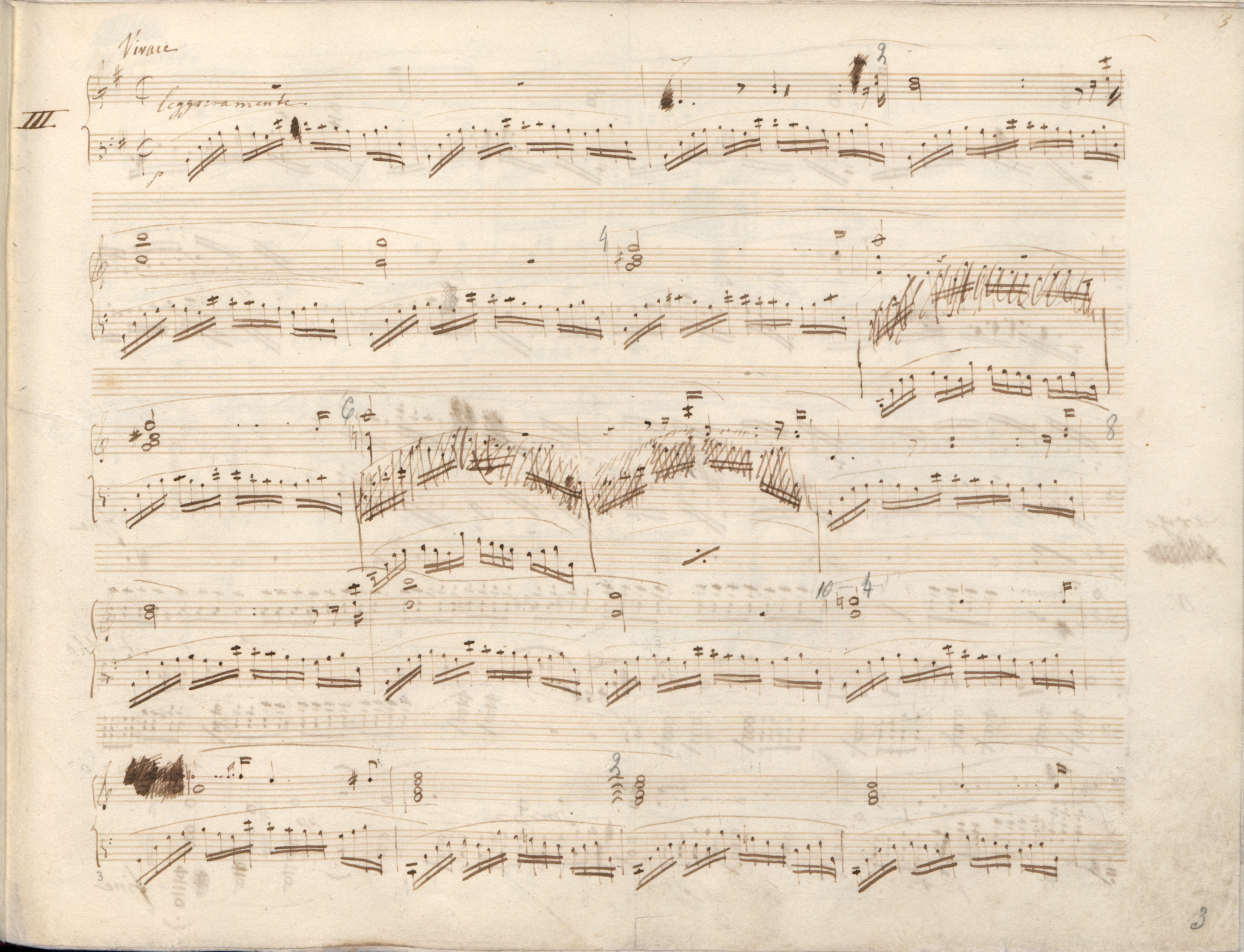



The rhythm in the 2nd half of the bar, when compared with similar situations in the entire Prelude, raises doubts whether the mitigation of the dotted rhythm was not a mistake of Chopin. It would be supported by FCI, in which rhythms featuring a quaver (or even a crotchet) can be found in b. 16-25 as well as in b. 7 and 9. Therefore, the rhythm of A in the discussed bar could be considered the initial rhythm, copied by mistake. This is the kind of correction we most probably observe in A in b. 9 – Chopin shortened there the initially written e2 quaver to a semiquaver, prolonging the preceding f 2 minim with a 3rd dot accordingly. In spite of that, we believe that the text of A is free from mistakes here, since this place is unique in terms of melody and harmony – d
2 minim with a 3rd dot accordingly. In spite of that, we believe that the text of A is free from mistakes here, since this place is unique in terms of melody and harmony – d 2 is the only altered note in the melodic line in the entire Prelude – its significance was emphasized by an exceptional performance marking,
2 is the only altered note in the melodic line in the entire Prelude – its significance was emphasized by an exceptional performance marking,  underlining the motif of an ascending second (d
underlining the motif of an ascending second (d 2-e2).
2-e2).
That uniqueness probably became the reason for Fontana's mistake, who erroneously wrote down the last note in the bar in FC as a semiquaver (following a crotchet provided with one dot), which was then changed in GE to  , which can be seen in the remaining similar situations.
, which can be seen in the remaining similar situations.
Compare the passage in the sources »
category imprint: Interpretations within context; Differences between sources
issues: GE revisions, Errors of FC
notation: Rhythm

